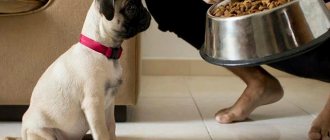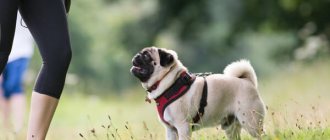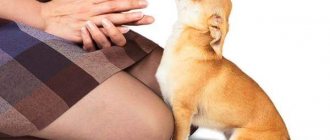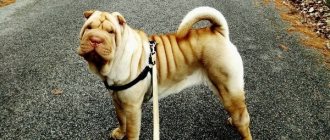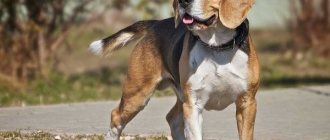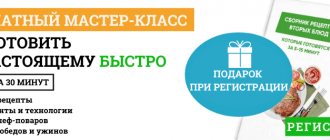The Chihuahua is a smart and stubborn dog, so it is best to start training it from an early age. When raising a puppy, you must take into account the fact that leadership qualities are inherent in the breed. After all, if the dog begins to dominate, it will be much more difficult to cope with this later.
Let's figure out what other breed characteristics need to be taken into account when training this little dog on your own.
Are Chihuahuas trainable?
Chihuahuas are distinguished by their sharp mind and quick wit; they are able to quickly absorb information and remember it. By carrying out training and education step by step, you can avoid difficulties, most of which are related to the character of your pets. By nature they are willful, capricious and stubborn. Provided the owner shows patience and perseverance, sneezes respond well to training and consider it as an exciting game. During step-by-step training, they acquire the skills to perform basic commands and behave correctly.
Chihuahua training goals
Education and training are necessary for several reasons:
- The dog is better socialized - being in public places, it does not pose a danger to others.
- At home, he behaves calmly (does not damage furniture, does not howl at night, goes to the toilet in a litter tray).
- The risk of getting into unpleasant situations on the street (road accidents, fights with other dogs) is reduced.
- The dog becomes friendly to people and animals.
- The pet is ready to attend exhibitions and competitions.
The optimal age for a Chihuahua to start training
To properly raise a dog, the process begins from the first days the puppy is in the house. Most often, babies of decorative breeds are taken away at the age of two months. From infancy, they must understand how to behave, what is allowed and what is prohibited, what objects can be played with and what cannot, where the toilet is located and much more.
Within a week, the Chihuahua becomes fully accustomed to the house, gets used to its nickname and begins to follow simple commands. Training is carried out after the second vaccination and the end of quarantine.
Is there a difference between training and education?
Training consists of teaching the dog a specific set of commands. It will be needed not only for participation in exhibitions and competitions, but also for developing obedience in sneezes.
Education is the instilling in a puppy of certain behavior skills in the house, on the street and in public places. The training process takes no more than six months, while Chihuahuas are raised throughout their lives. The task is to explain to the pet in a timely manner how to behave in a given situation, to convey to his understanding what is good and what is bad. The main tool of education is the behavior of the owner, his voice and intonation.
Types of motivation during training
The main reward for your dog should be your good mood and happy tone. Of course, you can’t do without treats, but they should not become the primary reason for a successful training for the dog.
Praise and treats
The correct ratio of praise and treats during training is two to one. That is, for one tasty treat there should be two verbal rewards.
Do not under any circumstances overfeed the animal. This will not only have a detrimental effect on his health and weight, but also on his attitude towards you. Agree, it’s unpleasant to realize that your dog is currying favor only for the sake of food, and not because he wants to win your favor.
Please note that you need to praise your pet loudly, joyfully, with feeling, because as mentioned above: our emotions are the main guideline for a dog.
Toys
Another motivating moment during training will be your game form. Many dogs get tired of monotony and monotony; energetic, curious Chihuahuas are no exception.
Take your favorite balls and teasers to the playground and practice commands with their help. You will be able to capture the attention of your ward for a long time and achieve better results.
Features of raising Chihuahuas
Despite the miniature size, intelligence and curiosity of sneezes, raising and teaching them commands is not easy. Representatives of the decorative breed strive to be leaders from a very early age. If obedience is not taught in time, the Chihuahua's dominance will become obvious and it will be difficult to get rid of it.
Some puppies are easy to train, others resist to the last, but in any case, the owner’s mood should be friendly, without aggression, physical punishment or screaming.
Boys
It will take more effort and time to train and raise a male sneeze dog. The owner will face disobedience and stubbornness, but if the dog understands the commands, this will last for a long time. If a conflict situation arises, the Chihuahua will show an iron character. In response to this, the owner will be required to take actions that can force him to be respected and recognized as a leader.
Girls
Chihuahua girls have a more impressionable, emotional, cunning and insightful nature. When learning, they grasp everything “on the fly”, but with the same speed they forget the acquired knowledge. If you don’t like something, bitches don’t go ahead. The most stubborn will retreat for a while, wait and try again to achieve what they want.
Tips for a novice trainer
Experienced dog breeders give the following tips on how to properly raise Chihuahua boys and girls:
- If the day is not going well in the morning, it is better to postpone the workout. You can engage in training only while maintaining confidence and complete calm;
- At the first sign of fatigue, you should take a break. There are no instant results;
- Excessive emotionality in class is a direct path to raising an animal with many phobias.
Note! No one can cope with all the commands at once. The main thing is to remain calm and receive positive emotions from contact with the animal.
Basic mistakes in parenting
Beginning breeders often do not quite understand how to train a Chihuahua dog and make mistakes. The most common of them are:
- practicing commands in a noisy place. Extraneous sounds will distract the Chihuahua from training;
- use of force. Physical punishment prevents the emergence of a trusting relationship between the pet and the owner, and this is the basis of successful parenting;
- feeding before training. The animal will show apathy towards everything that surrounds it;
- lack of motivation. Encouraging your dog will help you achieve results faster.
Note! Only regular training will bring the desired result.
Miniature Chihuahuas are a breed that you will never get bored with. Active, cute, smart - they will surely find a place in the heart of every dog lover, you just have to put a little effort into their upbringing.
What can you teach a Chihuahua?
If you raise a well-mannered and trained Chihuahua, the results of your work will be noticeable very soon. Pet training achievements include:
- calm and balanced behavior;
- lack of response to passing traffic;
- defecation in a tray or while walking;
- knowing your place in the apartment;
- absence of barking and howling for no reason.
Additionally, Chihuahuas are trained to perform tricks - to overcome obstacles, dance, bark on orders, search for things, and carry small objects in their teeth. Special classes with a dog handler will help teach sneezes to guard things or an apartment, and to be a guide for the visually impaired.
Organization of a sleeping place
To properly maintain a Chihuahua, you need to provide it with a sleeping place. For relaxation, this dog prefers soft, warm beds or houses - these are sold in any pet store. You need to make sure the structure is strong. You need to lay a soft rug in the house.
When talking about how to care for a Chihuahua, we must not forget about the correct location of the sleeping area. It should not be in a draft, near household or heating appliances, or on a hill. Location next to the door is undesirable. In an apartment with a large area, you can put several places to relax at once.
How to train and raise a puppy from 0 to 1 year old?
With early mastery of commands, the Chihuahua will become an obedient dog by one year. A dog breeder does absolutely the right thing if he starts raising a puppy at 2 months. During this period, they are taught to go to the toilet.
At 3 months, the baby is put on a collar and taught to walk on a leash. They start with 15 minutes at home, gradually increase the time to an hour while walking outside.
At 4 months, little Chihuahuas can learn to walk next to a leash and without it, return when the owner calls, and not pick up food from the ground. At the age of up to six months, the pet follows static orders (“Sit!”, “Lie down!”, “You can’t!”). After six months, the Chihuahua begins puberty, its character becomes rebellious, so it is worth making a lot of effort to teach other commands.
At home
The most important skills that a puppy should acquire at home are to know his name, get used to a place to rest and a toilet. They are taught to walk on a diaper or napkin soaked in urine, sitting there after sleeping or eating. After waiting for the Chihuahua to do its business, you need to praise it. Over time, the diaper is replaced with a tray and filler.
On the street
To speed up socialization, Chihuahuas need to be taken outside more often. He must get used to people, animals, moving vehicles and unusual sounds. A person, with his calm and natural behavior, shows that there is no reason for fear in the world around him.
At first, the sneeze should not be let off the leash; strict care must be taken to ensure that it does not get involved in a fight. The best place for walking with a dog is quiet streets and a specialized “dog” area.
Cons of the breed
Before you get a Chihuahua at home, you should also familiarize yourself with the disadvantages of the breed:
- Difficult temperament. These charming creatures are very jealous. They cannot get along with other dogs and cats. In addition, the pet is very attached to the owner and requires constant care and attention from him.
- Intolerance for loneliness. Chihuahuas should not be left alone for long periods of time. This sad dog may lose his appetite and get sick. Or maybe it’s the other way around – barking for hours on end and ruining the owner’s things.
- Difficulties in training. The Chihuahua dog is very smart, but is reluctant to follow human commands. It is not easy to accustom her to a litter box at home, and it is even more difficult to teach her to obey the commands “sit”, “lie down”, etc.
- Fragility. These babies are very vulnerable due to their size. Even a fall from a small height can cause injuries and fractures. The owner himself can injure the dog if handled carelessly. Therefore, it is not recommended to train Chihuahuas to sleep in their master's bed. It is also not recommended to purchase a dog if there is a very small child in the house.
Puppy health
When purchasing a puppy, you must make sure that it is healthy. Outwardly, this is as follows: the puppy runs quickly (except for super tiny options), he has an excellent appetite, clean eyes and ears, smooth and shiny coat. The puppy should not cough or sneeze. When examining your puppy's teeth, pay attention to the bite: it should be scissor-shaped or with a very slight underbite. As for the number of teeth, the following must be taken into account: there should be all the canines, and preferably 12 incisors (the absence of any of the incisors is possible).
One and a half to two month old Chihuahua puppies are very small, but very active and funny. When purchasing a puppy, consult with the breeder on how to care for the puppy and STRICTLY follow his recommendations.
Feeding the puppy
At first, after the puppy is taken from home, you need to feed him his usual food. It is easier to feed a puppy dry food than natural food. Dry food is completely balanced, containing the optimal amount of vitamins and minerals that a puppy needs for full development and growth. The following brands are well suited for feeding a puppy: Brit, Pro Plan, Acana, Orijen, Bosch, Magnusson, Monge, Xills, Royal Canin (Royal Canin), Josera (Yozera).
Veterinarians recommend soaking dry food for puppies in a small amount of slightly warm water to avoid gastritis and overeating. When food is soaked, it swells and the dog eats less of it than dry food. Once a day, the puppy is given cottage cheese with milk (or kefir).
There is an opinion that by limiting the puppy's nutrition during growth, it is possible to achieve a lower weight in an adult dog. However, experts say that this will bring nothing but harm. Poor feeding will lead to the formation of poor muscles and will affect health.
After the puppy adapts to the new place, you can gradually switch it to a different diet. You can feed your puppy natural products. The main diet is lean meat (beef, turkey (without skin), rabbit) boiled and finely chopped. As a side dish - well-cooked rice, buckwheat, rolled oats. Once a week - half a boiled yolk. From time to time, include fish in your puppy's diet, but only ocean fish, with the exception of pollock and fish with a high fat content (capelin, etc.). From fermented milk products - kefir, cottage cheese, fermented baked milk, cheese (finely chopped).
Small dogs love fruits (all are healthy, especially apples and bananas). Vegetables are better digested when stewed or boiled. In their raw form, they will be better absorbed if you grate them and add ½ spoon of vegetable oil. Carrots are useful; the carotene they contain makes the coat color brighter and restores pigmentation.
Food should always be fresh and slightly warm. And, of course, you have to let him chew on beef bones and cartilage. There should always be clean water near the puppy's house. A 1.5-2 month old puppy needs to be fed 5 times a day.
What you should absolutely not give your puppy to eat: pork or fatty meat, river fish, candy and sugar, pasta, legumes, spices, nuts, sweet bell peppers, onions, fresh cabbage (with the exception of healthy sauerkraut). Instead of meat, you cannot give sausages (sausages) or smoked or salty foods. Their composition is far from meat, and various additives are very toxic for dogs.
Vitamin and mineral supplements
- There are special vitamin complexes for puppies, sold in veterinary pharmacies. The preparation you choose must contain calcium, phosphorus, magnesium, as well as all the essential vitamins and a number of microelements. Phytomins from the Russian manufacturer Veda have proven themselves well.
- There are phytomines: for teeth, for fur, anti-allergic, hematodog (for puppies, for weakened adults and after surgery) and others. Many people praise 8 in 1 vitamin supplements.
Vaccination
- If you suspect that the puppy has worms (riding on his butt or causeless mild vomiting before eating), immediately begin deworming (Drontal Junior (suspension), Pirantel suspension, “Prasicide-suspension”). An adult dog needs 1 time every three Give deworming medicine for a month, to the puppy at the ages of 4, 8 and 12 weeks, and then at the ages of 4, 5 and 6 months. Give your puppy or adult dog activated charcoal 2 hours after taking anthelmintic medications.
Has the puppy been vaccinated, and if vaccinated, when and with what vaccine? If the puppy is not vaccinated, then a week after its purchase, deworming is carried out and another week later the first vaccination is given with the NOBIVAK vaccine.
Before vaccination, you can drop Gamavit (sold at a veterinary pharmacy) into the puppy’s mouth. The dose of the vaccine does not need to be reduced, as many people think, because of the size of the small dog. After vaccination, you need to ask the veterinary hospital: when to give the next vaccination and strictly follow the schedule (if the puppy is healthy). It is advisable to vaccinate puppies for the first time at the age of 9, and for super-small ones at the age of 10-11 weeks. You cannot start vaccination during the period of teeth change (age from 3.5 to 6 months).
About the first steps together
On the first day, do not tire your pet with excessive attention. Let him sniff and get acquainted with his new home. In 1-2 days he will get used to it and will happily run around the house, accompanying you. The puppy's house should be in a warm corner without drafts. In the kitchen you can additionally place a bed.
How to teach commands to a Chihuahua?
In order for your pet to correctly and quickly follow commands, you should adhere to several training rules:
- Don't let your Chihuahua lead the walk.
- Praise and encourage each time after completion.
- Do not punish or hit the dog.
- Exercise daily.
- Don't be fooled by your pet's whims.
- Learn new skills after reviewing those already learned.
- Do not train a well-fed animal.
- Start learning with simple actions, gradually moving to complex ones.
What commands does a dog need to know?
In order to avoid unpleasant situations on the street, in transport and in public places, sneezes must be trained in basic commands. This can be achieved in just three to four months with daily training. Exercises should be enjoyable for both the Chihuahua and its owner. Knowing the basic commands allows you to establish an emotional connection with your pet and reliably strengthen it.
“Give me your paw!”
The phrase is pronounced in a calm voice and at the same time a hand is extended to the pet. At first, they help him raise his paw, and then he is encouraged to do it independently. In this case, the main role is played by visual memorization of the gesture.
"To me!"
The command is important during off-leash walks in case the dog runs after a cat or into a dangerous place. They order in a loud voice, clearly and clearly, accompanied by a gesture (patting the thighs).
"Lie!"
To train, take a treat in your hand, give the dog a sniff, and lower it to the floor so that he has to lie down. At the same time, loudly and clearly they say “Lie down!” Light pressure on the dog's shoulder blades is acceptable.
"Sit!"
They say “Sit!” and raise the hand with the tasty treat over the sneeze’s nose. In this case, he will have to sit down to get the treat. To help the puppy, lightly press on his croup.
"Place!"
The command is prohibitive, so it is pronounced with a menacing intonation and at the same time pointed to a couch or other place. It is used if the owner is dissatisfied with the behavior of the Chihuahua or he has committed a crime. They do not give a treat for following an order, but only push the sneeze towards the bed.
"Near!"
The command needs to be practiced while walking. At the same time they say “Near!” and pull the leash towards themselves. If the dog runs far ahead, he is pulled back again, but not too much. When performing a sneeze, they are praised and rewarded with a treat.
"It is forbidden!"
The command is used when you need to prohibit any action. They say it loudly and sharply, making it clear that they are unhappy with the dog. You can distract a sneeze with a tasty treat.
Dog behavior on the street
When a puppy first goes outside, there are so many new things around him. And a child with a strong psyche will strive to learn new things. The owner should not interfere with this, within reasonable limits, of course. If the pet decides to pick up something from the ground, the owner turns it on himself and attracts attention with a treat or toy.
The puppy must understand that the street is not just running around with other dogs. This is an opportunity to communicate with the owner, it is interesting and cool to be with him. The owner has toys and treats for the pet.
That is, when going out for a walk with the puppy, the owner constantly plays with him, not giving him the opportunity to make decisions on his own. By the way, in the warm season you can practice commands with your Chihuahua while walking. Firstly, it gives mental stress, and secondly, the dog is interested in communicating with the owner, which avoids problems with contact.
Important! Over time, it is better to switch the dog to rewarding with a toy instead of a treat.
Despite the fact that representatives of the Chihuahua breed are difficult to train, everything is in the hands of the owner. With a competent approach to training and contact with the dog, everything will definitely work out.
